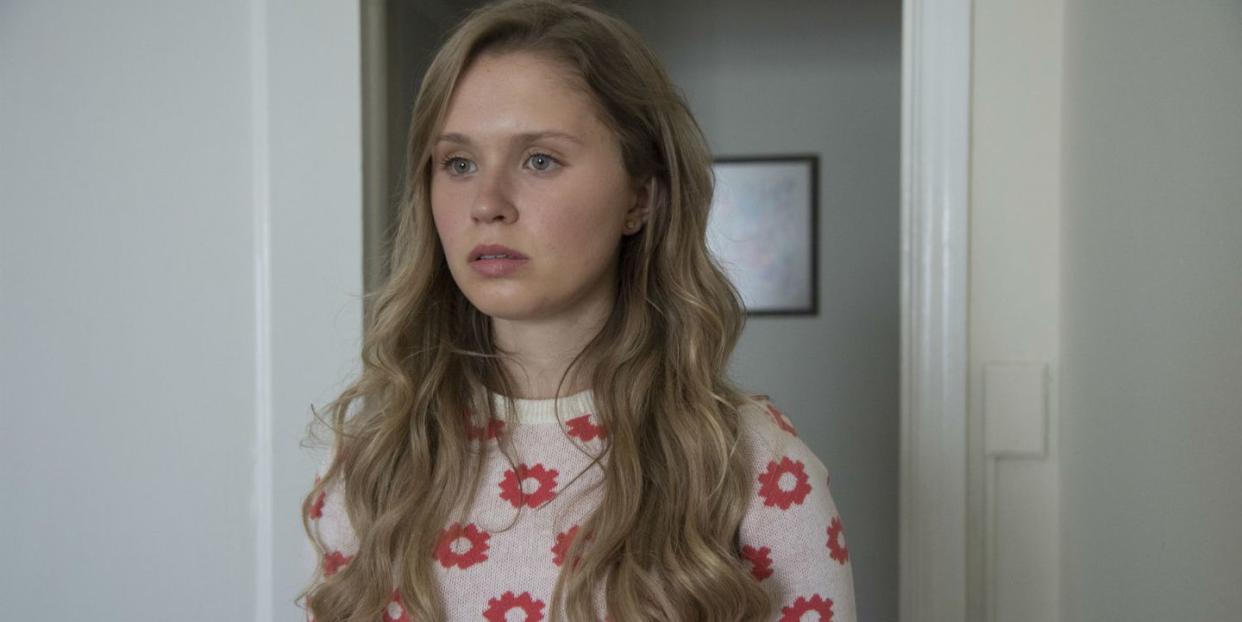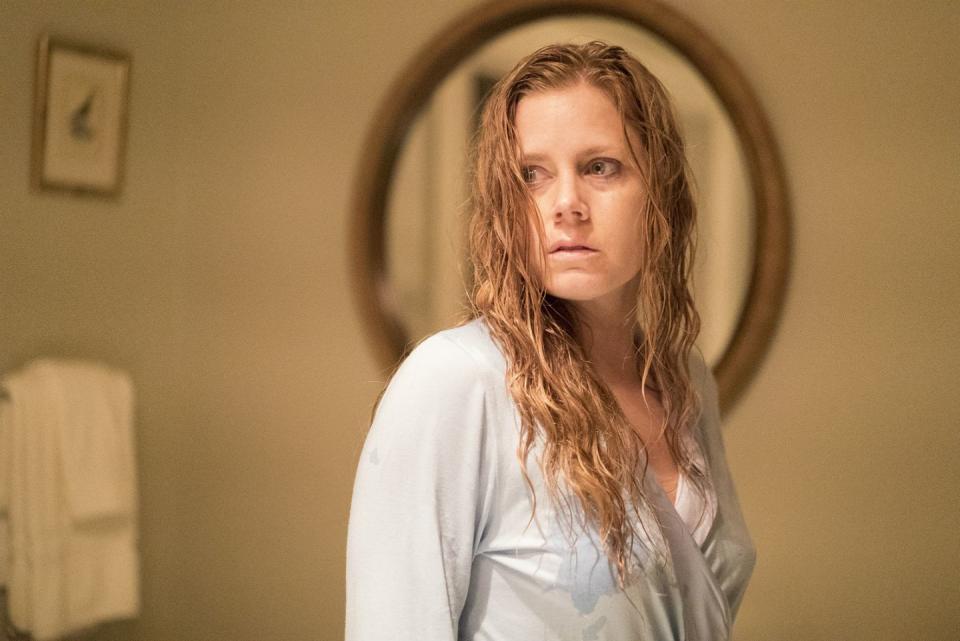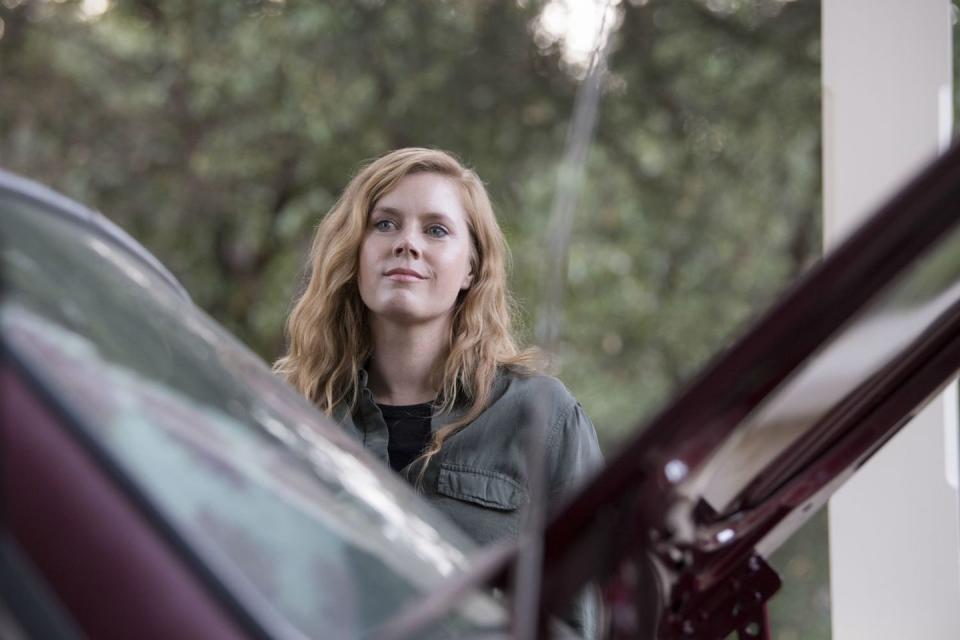The Sharp Objects Finale Delivers a Shocking Twist Ending

There are three kinds of violence on display in Sharp Objects, manifested through three generations of the Crellin/Preaker family in Adora, Camille, and Amma. Adora’s kind of violence is quiet and domestic: “over-care, killing with kindness.” She dotes on her daughters as she tenderly feeds them anti-freeze and rat poison, infantilizing them until their dying breath. Camille’s violence is turned inwards: she makes herself bleed rather than harm anyone else. And then there’s Amma, who in the stunning final moments of "Milk" is revealed to be the actual murderer of Ann Nash and Natalie Keene. There’s nothing quiet or internal about Amma’s violence, which is openly vicious and animalistic. Amma’s kind of violence is an aberration, particularly in a town like Wind Gap, where nobody took seriously Camille’s idea that the girls’ murderer could be female.
The mid-credits scene, in which we see conclusive footage of Amma and her minions committing the murders, ends on a haunting slow-motion shot of Amma’s face as she strangles her sweet new friend Mae to death. She looks feral, her head thrown back, her mouth a snarl. To quote Camille’s description of the murders in her article, Amma looks overcome with “naked rage”-the same naked rage that Vickery and Richard refused to believe could ever have come from a woman.
Vickery has one of the most telling lines of the finale, telling Richard that Camille “has a lot of her mother in her. Adora’s not as dramatic about it, but that woman loves her attention.” Camille is actually not particularly dramatic; not outwardly, and certainly not to Vickery, but I think what he’s really saying is that Adora’s attention-seeking takes a more acceptable form by the standards of Wind Gap. The doctor noted last week that “Munchausen mothers” are often addicted to the attention and sympathy that comes from having a sick child; Adora’s violence is couched within the accepted feminine role of Doting Mother, which is why it has gone unchecked in this town for decades.

As was hinted at by her unsuccessful attempt to rewrite the history of Calhoun Day-inserting an all-female militia into a misogynistic confederate celebration centering on gang rape-Amma is tearing up the conservative rulebook in Wind Gap, but hers is not exactly a feminist awakening you can root for. In murdering Ann, Natalie, and Mae, Amma is making overt the violence that’s been kept politely under wraps for so long in her own family: if you poison a child for long enough, she will become a monster. If you pump enough toxins into an organism, it will become toxic in itself.
“It’s best if you don’t try to walk. Crawling’s okay,” Amma tells Camille gently after Camille willingly drinks Adora’s poison. The depth of Amma’s suffering is spelled out so clearly in this one line. She knows exactly what’s been happening to her all these years, and has learned how to get through it when Adora brings her that medicine. During the surreal, haunting Last Supper sequence, Amma likens herself to Persephone, Queen of the Underworld in Greek mythology, who could never fit in with the living “because they’re afraid of her, after where she’s been." Having spent much of her childhood and adolescence hovering between life and death-the same limbo in which Camille finds herself during "Milk"-it’s no surprise that Amma grew up twisted, ready for death, with an urge to drag other girls with her to the grave. Camille wrote her pain onto her own skin; Amma inflicted hers onto other innocent girls, but both are products of the same generational abuse. As Marti Noxon reminds us in the script for this episode, Adora herself was a victim of her own mother, who drove her into the woods and left her there alone to find her way home. Violence always has a root.
Having finally learned the truth about her mother, Camille willingly puts her head into the lion’s mouth and goes back into the house where she knows she may die. When she drinks the milk at dinner, and later hungrily asks for “more, mama” as Adora feeds her medicine, it’s not completely clear whether she’s suicidal or just willing to do whatever it takes to gather evidence. Certainly given her history of self-harm and alcohol abuse, there’s a horrible full-circle resonance to watching Camille willingly drink poison, and of course Adora jumps at the chance to play nursemaid to the one child who has never needed her before.

But it’s not long before Camille ends up in real trouble. With no tolerance for the poison she’s ailing within a day, barely able to drag herself along the floor and too weak to call out for help when a suspicious Richard rings the doorbell. This is not the kind of show where Camille’s big strong cop boyfriend rides in to save her in the nick of time, and so although Richard does return-along with Curry, who apparently almost beat down the station door out of concern for Camille-it’s a pretty brutal reunion. While trying to revive Camille, Richard notices her scars and visibly recoils at the sight, leaving her to cry in Curry’s arms. As if we needed further proof after last week's episode that Richard is not emotionally capable of being a good choice for Camille, here’s the nail in the coffin. And at least it’s clear, from the way Camille and Amma laugh at him after he leaves the hospital, that she’s going to be fine without him. He was always a footnote in her story, no matter how intermittently hot their sex scenes were.
The first time I watched this episode, I made the mistake of switching off as soon as the credits rolled, and was startled by how abrupt and ambiguous the ending felt. I was also pretty confident that it was going to make a lot of people very angry, since the dollhouse moment alone doesn’t offer concrete proof that the killer is Amma (Adora could have put the teeth in the dollhouse, for starters). Leaving the concrete proof this far into the credits is gutsy: it’s a full 40 seconds from the beginning of the credits to the murder footage, which leaves the potential for a lot of viewers to miss it as I did. But it’s been clear from the start that Sharp Objects is not really a murder mystery, and anyone waiting solely for the resolution of that storyline will probably be disappointed. The show is a character study, and Camille’s emotional journey remains front and center throughout its finale.
The moment in which Camille finds a floor of human teeth in Amma’s dollhouse-teeth that could only have come from Ann, Natalie and Mae-is a singularly nauseous and horrifying beat, recalling the ivory floor in Adora’s house that comes to symbolize all the historic violence baked into this family. Coming as it does after Camille has become Amma’s caretaker, this moment acts as a final rebuke to Camille’s fantasy that she could ever have saved Marian. Had Marian survived into adolescence, she might have ended up just like Amma; full of rage with no safe outlet, too poisoned to be anything but poisonous. In the end, the only person Camille can save is herself, which is fitting after all the self-harm she’s inflicted. Camille learning that her only living relative is a serial killer does not constitute a happy ending in any universe, but after years of torturing herself over her family’s unresolved demons, maybe she’ll be stronger for knowing the truth.
('You Might Also Like',)

